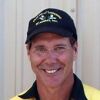I recently found myself stumbling in my performance behind the gun as I developed some bad habits over time that I failed to correct properly. It wasn’t anything big, mind you, but noticeable over a period of time. You see, we get out of tune. Like a finely tuned instrument, we have to recalibrate our bodies and our minds. You really only notice it when you are shooting under pressure. Then, if you pay close attention, you notice a failure to maintain a skill set at a very precise level when operating at the top end of your performance zone. Simply put, you find yourself doing other things besides seeing what you need to see and isolating the trigger properly.
While preparing for major competitions, I perceived that I had a definite problem with getting my shooting cycle out of sequence. In my quest for speed, I was neglecting accuracy. There were a few inches of drift, sometimes more, or a misalignment of the gun in the first shot as I trained even faster. Then I realized that I was not able to simply hold still and let the shot break. I constantly found myself pulling the gun down too soon and pushing the shot from time to time.
So in the final phase of training, I didn’t speed up. Instead, I went back to some basic programming drills and exercises and created a strong mental image of what I needed to do to bring my skills up to where they needed to be.
Accuracy vs. Speed
Accuracy and speed are not friends. In fact, they are constantly fighting with each other for control of your shooting. The only way they co-exist is when there is an intermediary functioning. That intermediary is calmness. Being able to control the mind and hold still while manipulating the trigger at high speed is one of the most difficult things to do under pressure. But if one wishes to reach the higher levels of skill at arms, then it is a necessary mental attribute to develop.
Much like putting oneself under pressure in order to build gunfight skill, one must put themselves under pressure when doing training for accuracy, too. Almost anybody can shoot well if they are given time to shoot. When there are strict time limits imposed or the targets become smaller and the shooting platform is less than ideal, then you have an opportunity to see what you are made of.
If you pay attention as you “turn up the wick” you will find yourself doing all sorts of things you did not intend to do. This is the result of the brain perceiving what is about to happen and developing compensation responses to it. Everyone has these responses. Some have it more than others.
Integration
Once I perceived what I was doing wrong, I did a strong analysis about where the skill was breaking down and started mentally imaging what needed to change from what I was currently doing. Reprogramming the mind and slowing down while recalibrating is a difficult but necessary step in fixing the problems.
I took a variety of TPC targets and put them up. I started out standing still, with no time limits, just allowing the shot to be fired without rushing it. I repeated this basic set until I was satisfied I was able to control my mental and physical processes on a conscious level and could absolutely guarantee the shot.
Then I added time limits, slowly decreasing the amount of time I gave myself to accomplish a series of shots. Again, I worked through the targets, using imagery to guide the shooting until I was 100 percent successful. As time went on, I added a lot of variations. It was frustrating at times but necessary in order to reach a level of highly consistent shooting at high speed.
Conclusion
For me, the value of training for accuracy cannot be overstated. Over time, your accuracy under pressure will erode alarmingly. I see it constantly in the training and real world environments where shooters cannot hit on demand. But you must put yourself under pressure when training accuracy. You must learn to function under the allowable time and opportunity given to you.
In a world where square range training is looked upon as “boring” and only force on force training is deemed necessary, training for accuracy remains the one skill that must be trained relentlessly. As former world champion Ross Seyfried once said, “You can’t miss fast enough to win.”












